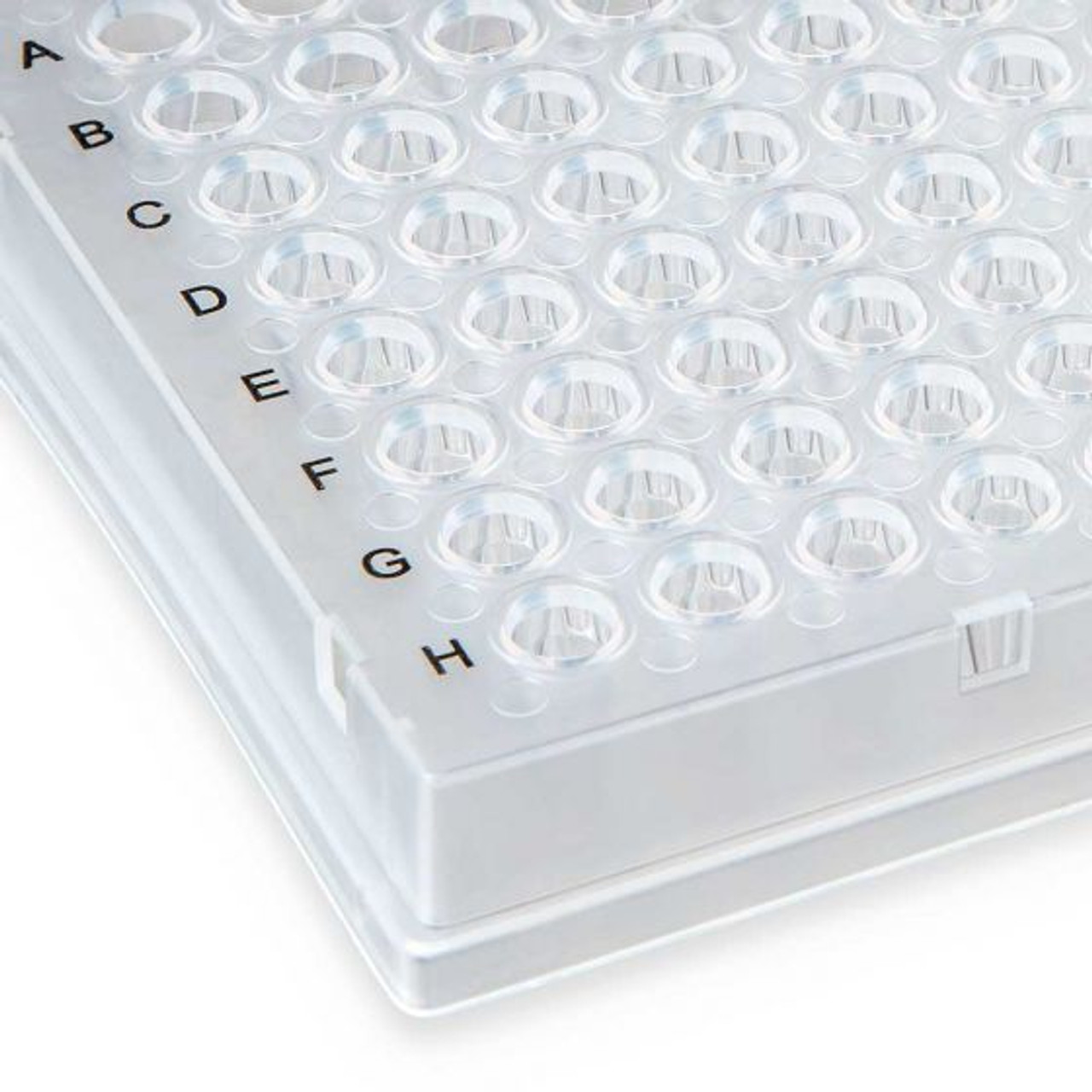The demand for both 96 well PCR plates and 384 well PCR plates has skyrocketed in step with increased testing for SARS-CoV-2.
Companies of all sizes are scrambling to locate new suppliers to augment or even replace their current source for 96 well and 384 well PCR plates.
Much to their happiness, they are discovering that PCR plates from Stellar Scientific are as good or better than what they had been buying.
Customers remark on the clarity of our PCR plates and repeatedly comment on the black alphanumeric labeling which add contrast and makes it easy to keep track of which well is being worked on.

Our Roche® Lightcycler 480 customers rave about the uniform whiteness of our A24/P24 notched white 384 well plates and the results they get.
Did you know it takes just twelve different PCR plates to cover a range of more than ninety of the most popular qPCR and endpoint PCR thermal cyclers?
Here are some of the ways to distinguish between different PCR plates:
96 Well PCR plates may be:
High-profile - Each well of the PCR plate holds 0.2mL
Low-profile - Each well of the PCR plate holds 0.1mL
Non-skirted, semi-skirted or full skirted.
With a semi-skirted PCR plate, the tube wells are exposed and support the weight of the plate.
A full-skirted PCR plate conceals the wells and it is the frame of the PCR plate that supports the weight.
96 well PCR plates may have a flat top or raised ridge.
In some cases, a flat top PCR plate is required for compatibility with a specific thermal cycler, but it also provides an excellent surface when a PCR plate seal or heat seals are used to lock in reagents
96 well PCR plates may be crystal clear, opaque white, or color coded with a light color tint.

384 Well PCR plates may be:
Either clear or opaque white
384 well PCR plates are always skirted and may have a notch in the A24 position (top right hand side) or both A24 and P24 (top and bottom right side of the plate).

Some PCR plate manufacturers produce PCR plates with a rigid polycarbonate shell and a flexible polypropylene interior.

Hard-shell PCR plates are required when the PCR plate will be manipulated by a robotic liquid handler and must withstand the pressure of a mechanical grip.
For most applications, a PCR plate made from RNase/DNase and pyrogen free polypropylene suffices.
Compatibility with a specific model of thermal cycler depends on which heating block the thermal cycler has installed and the dimensions of that block.
Many of the newer qPCR thermal cyclers by Applied Biosystems® (ABI) can accommodate several different PCR plates.

For example: The Quantstudio® 5, 6, 7, 12k and the Veriti and ViiA7 are all capable of using both 96-well and 384 well PCR plates.
These may be low-profile 96-well plates like our P96-104 plates
A 96-well high-profile plate like our P96-103 plate
or a clear 384-well plate with an A24 notch like our P384-A24 plate

Bio-Rad® CFX96 thermal cyclers require a full-skirted low-profile PCR plate like our P96-101.

Eppendorf® Mastercyclers support a variety of PCR plates including 96-well non-skirted plates in both high-profile (this would be our P96-100 PCR plate) and low-profile (our P96-100LP PCR plate) formats.
If supply chain issues are threatening your PCR testing, check out the PCR plate options at Stellar Scientific.


